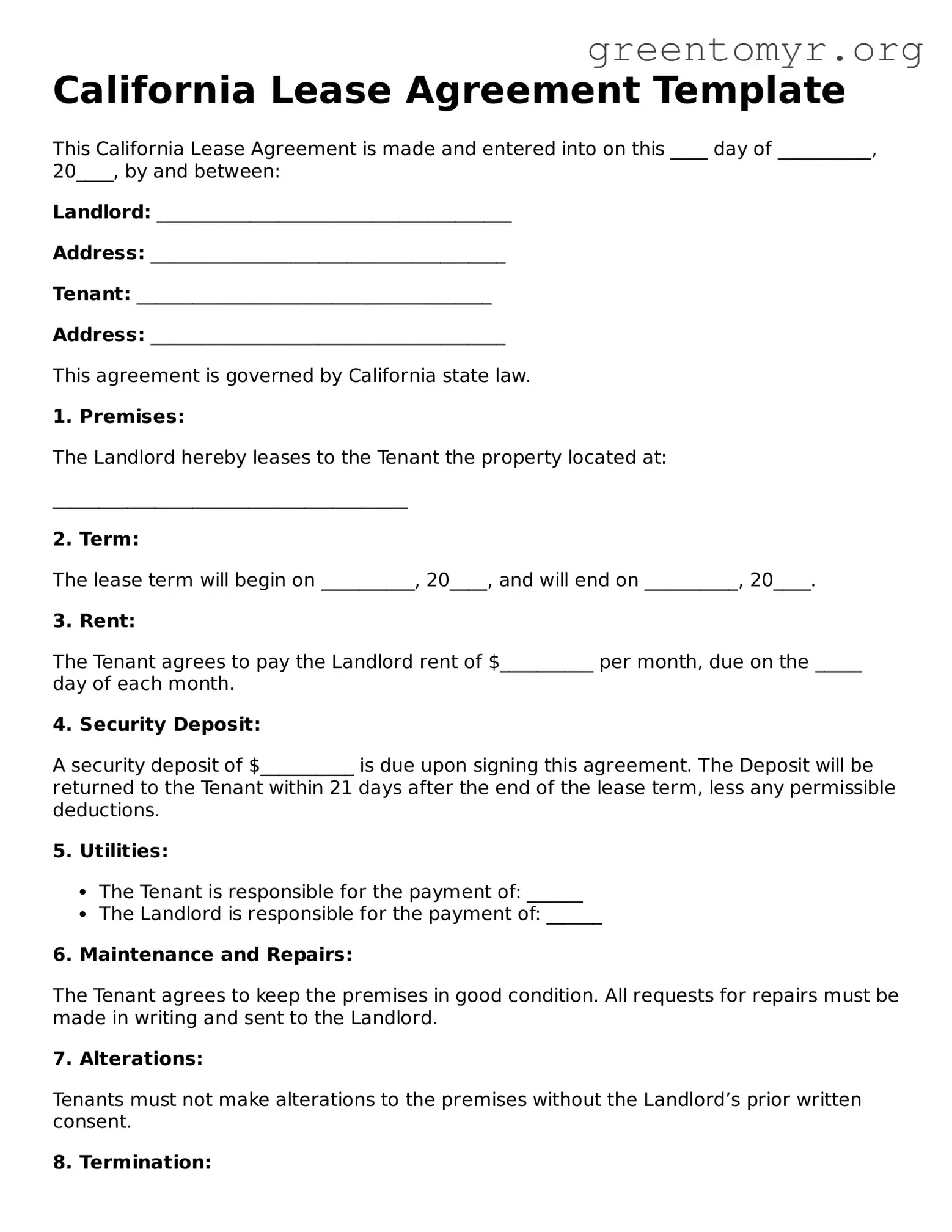California Lease Agreement Template
This California Lease Agreement is made and entered into on this ____ day of __________, 20____, by and between:
Landlord: ______________________________________
Address: ______________________________________
Tenant: ______________________________________
Address: ______________________________________
This agreement is governed by California state law.
1. Premises:
The Landlord hereby leases to the Tenant the property located at:
______________________________________
2. Term:
The lease term will begin on __________, 20____, and will end on __________, 20____.
3. Rent:
The Tenant agrees to pay the Landlord rent of $__________ per month, due on the _____ day of each month.
4. Security Deposit:
A security deposit of $__________ is due upon signing this agreement. The Deposit will be returned to the Tenant within 21 days after the end of the lease term, less any permissible deductions.
5. Utilities:
- The Tenant is responsible for the payment of: ______
- The Landlord is responsible for the payment of: ______
6. Maintenance and Repairs:
The Tenant agrees to keep the premises in good condition. All requests for repairs must be made in writing and sent to the Landlord.
7. Alterations:
Tenants must not make alterations to the premises without the Landlord’s prior written consent.
8. Termination:
Notice must be given at least 30 days before termination by either party, unless otherwise stated in this agreement.
9. Governing Law:
This lease shall be governed by and construed in accordance with the laws of the State of California.
IN WITNESS WHEREOF, the parties hereto have executed this Lease Agreement on the day and year first above written.
Landlord Signature: ______________________ Date: ____________
Tenant Signature: ______________________ Date: ____________
